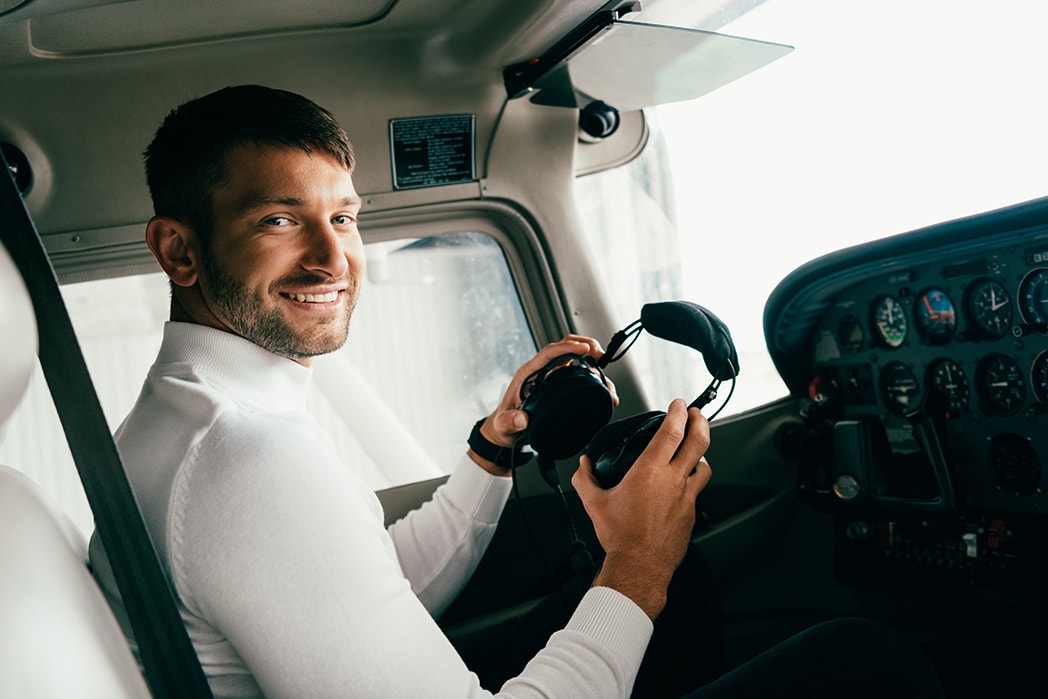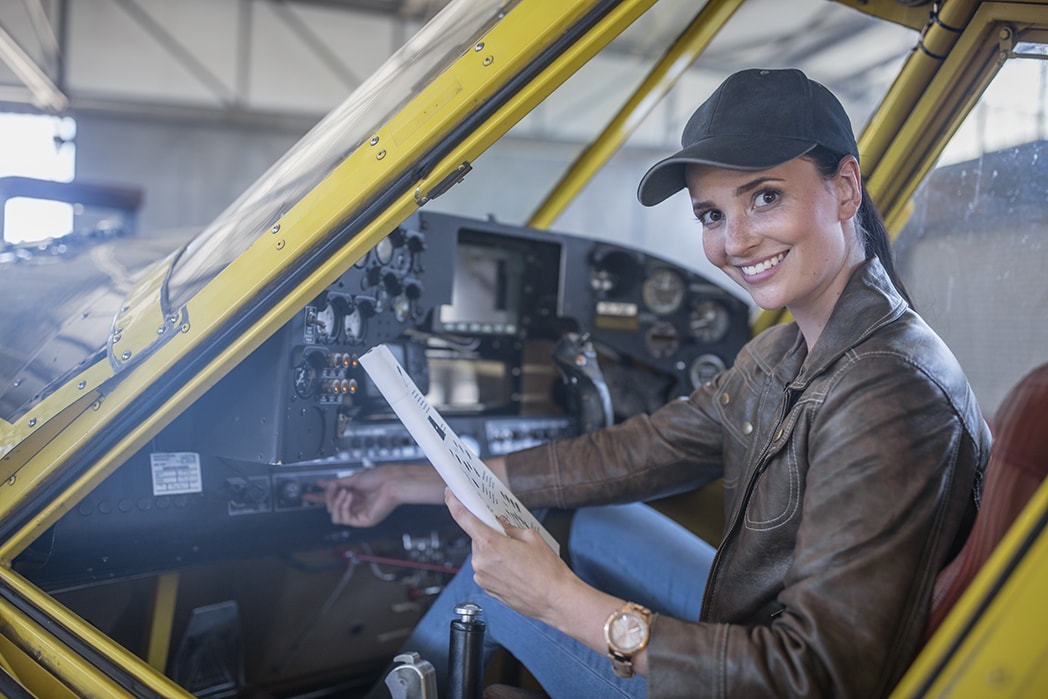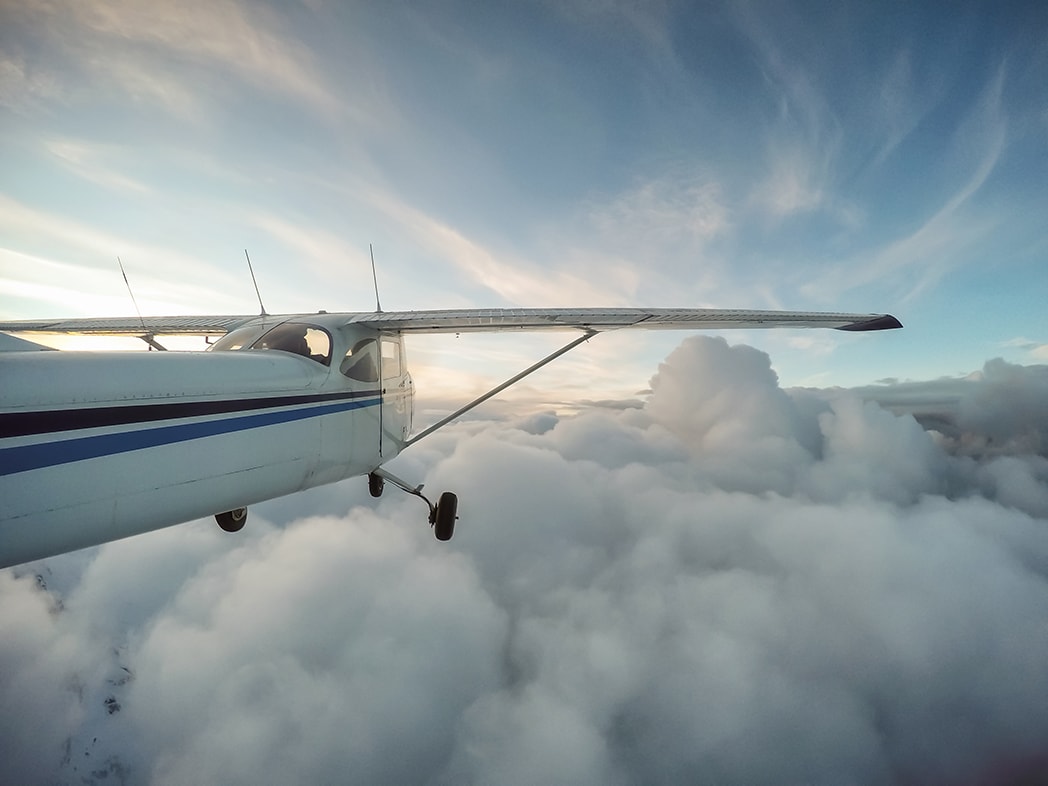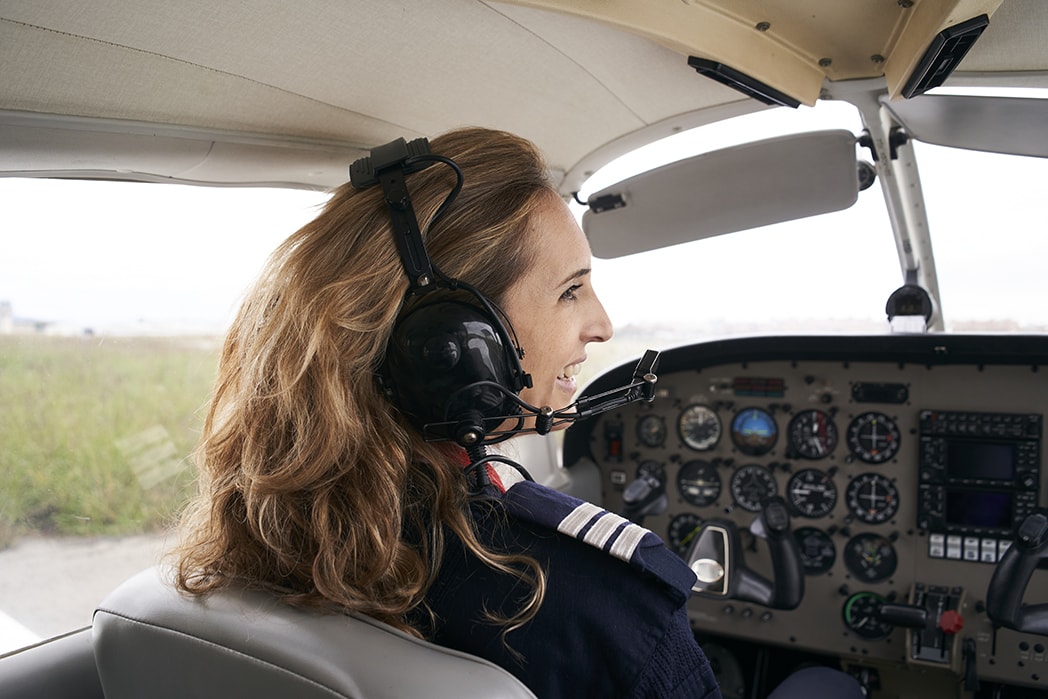How to Pilot License: Steps, Costs & Requirements
Jun 05, 2025
Want to get a pilot license? Like a driver's license, a pilot license is an official certification that grants you specific permissions just as a driver's license allows you to drive a vehicle, a pilot license allows you to fly an aircraft, both issued by relevant authorities with certain requirements.
This guide covers the steps, cost, and requirements to get your pilot license. Whether you’re going for a private pilot license or a commercial one, understanding the overall pilot licensing process will help you navigate each phase with clarity and confidence.
Key Takeaways
-
Your pilot journey starts with a student pilot certificate which requires a medical exam and understanding the eligibility requirements.
-
Moving up to different pilot licenses like Private Pilot License and Commercial Pilot License requires meeting specific flight hours and passing written and practical tests.
-
Financial planning is key as the total cost of pilot training can range from $70,000 to over $108,000 depending on location and type of training.
Understanding Pilot Licenses

Your pilot license is the official permission to fly, it allows you to legally operate an aircraft. In the United States it is the responsibility of the Federal Aviation Administration (FAA) to manage and regulate both private pilot’s licenses and general pilot’s licenses to ensure each individual meets all the requirements and standards.
FAA’s strict supervision ensures every pilot is skilled and proficient in aviation practices therefore making air travel safer for all parties involved. Pilot certification is the process by which the FAA ensures pilots meet all required standards before granting a license.
Types of Pilot Licenses
There are various pilot licenses and certificates for different skill levels and flight purposes:
-
Student pilot license
-
Recreational pilots certificate
-
Sport pilot certificate
-
Private pilot's license
-
Commercial pilot's license
-
Airline Transport Pilot License (ATPL)
Each has its own set of privileges and restrictions. Recreational pilots have distance, airspace and night flying restrictions, sport pilot certificate holders have a simpler licensing process and can fly light-sport aircraft with fewer hours.
With a private pilot’s license you can fly passengers, fly at night and travel across the US. A commercial pilot’s license allows you to get paid for your services as a pilot and opens up professional flying opportunities.
To move up in aviation you must meet the Federal Aviation Administration’s requirements for each class of license. To captain commercial aircraft you must earn an ATPL by first getting a private pilot’s license and commercial pilot’s license and then meet the FAA requirements.
Now you know the different licenses and paths.
Starting Your Journey: Student Pilot Certificate

Becoming a pilot starts with getting the student pilot certificate. This is for beginners and allows student pilots to fly only under the supervision of a certified flight instructor.
Once you have your student pilot certificate, you can begin flight training with a certified instructor.
Before you start flight training, you need to get a medical certificate from an Aviation Medical Examiner.
This is the first step and confirms you are physically able to meet the demands of flying an aircraft. Many aspiring pilots begin this process by enrolling in a flight school or joining a pilot program that provides structured training and guidance from experienced instructors.
Eligibility Requirements
To be eligible for a student pilot certificate you must meet the following: be at least 16 years old and be able to read English. The FAA requires you to pass a medical examination by an FAA approved Aviation Medical Examiner to ensure you meet the medical requirements set by the FAA for a student pilot certificate.
These are the basic requirements to get you started on your pilot training.
Application Process
To apply for a student pilot certificate which is required to start flight training you must fill out an application through the Integrated Airman Certification and Rating Application (IACRA) and send it to the Federal Aviation Administration (FAA) or someone who is authorized to represent them. After submission it takes about 3 weeks to get your certificate so you can start your flight training without delay.
Once you receive your student pilot certificate, you can begin the required training for your chosen pilot certificate.
Medical Certificate
Before you start your flight training you will need to get a medical certificate from an Aviation Medical Examiner (AME). To use the rights of a student pilot certificate you will need at least a third class medical.
The cost of this medical is $120 to $200. It’s an expense in the pursuit of your pilot training and getting your pilot certificate.
Private Pilot Training

Private pilot training is a combination of theory and practical training for private pilots. A student pilot certificate is required for solo flying so apply early to avoid delays.
Training includes ground school and flying lessons, both theory and practical flying. Ground school classes provide foundational knowledge in subjects like navigation, aerodynamics, and weather before practical flying begins.
The training process for private pilots includes both classroom and in-flight instruction.
Ground School
Ground school covers the theory for certification including aviation theory. Lessons cover aircraft systems, navigation, meteorology and aviation regulations all essential for pilot competence.
Ground school lays the foundation for practical flying training so you understand the principles of safe and effective flying.
For those seeking a flexible and comprehensive option, Flight Nerd Air Force offers an online ground school program tailored to help student pilots master these core topics and prepare for FAA certification.
Flight Training
Flying training is guided practice sessions where you practice maneuvers, emergency procedures and independent flying under the watchful eye of qualified flight instructors. Solo flying is key to building self reliance and confidence in your ability to fly an aircraft.
The practical part of this training hones your skills at the controls and gives you the skills to deal with the complexities of flying an aircraft. Accumulating flight experience during training is essential for meeting certification requirements and progressing toward your pilot license.
Written Exams and Practical Tests

To get a private pilot license you need to pass written tests and practical exams to show your knowledge and skills. The FAA written exam tests your knowledge of aviation topics through multiple choice questions.
You must also pass a practical exam, commonly referred to as a checkride, which includes both an oral and a flight test conducted by a designated pilot examiner to demonstrate your flying abilities.
Knowledge Test
The private pilot Airmen Knowledge Test is a 60 question multiple choice exam with a 2 hour time limit. You must score at least 70% to pass.
This test measures the test takers knowledge of aeronautical knowledge necessary to fly safely and efficiently.
Practical Test
Getting your pilot license is based on passing the practical test, also known as a checkride. This is where you get to show your proficiency in flying and understanding of the aircraft before a designated pilot examiner.
This is the first part of the test is an oral evaluation, then it turns into a flight evaluation. This is where you get to show your skills in actual flying scenarios.
Obtaining Advanced Ratings
Advanced ratings increase your skills and the types of aircraft you can fly. After getting your pilot license, the next step is often to get advanced ratings, such as an instrument or multi-engine rating. These ratings allow pilots to fly in a wider range of weather conditions.
Instrument Rating
An instrument rating lets you fly and navigate in any weather with reduced visibility. This is essential for commercial pilots who need to fly in bad weather.
The instrument rating course (IFR) involves additional training and instrument training to be proficient in instrument meteorological conditions.
Multi-Engine Rating
A multi-engine rating lets you fly aircraft with more than one engine, safer and better performance. To get this rating, do 10-15 hours of multi-engine flight training and pass a practical test.
This training prepares you for flying multi-engine aircraft. Understanding basic aircraft maintenance is also important when training on multi-engine aircraft to ensure safety and reliability.
Becoming a Commercial Pilot
A commercial pilot license allows you to operate aircraft for compensation or hire, opening up a wide range of career opportunities. To become a commercial pilot, you must complete a structured training process that prepares you for professional flying. Many pilots aspire to become airline pilots and eventually fly for major airlines.
For many, it’s also the key step toward becoming commercial airline pilots, flying for major carriers on national or international routes.
CPL Training Requirements
To get a Commercial Pilot License (CPL) you need to have at least 250 hours. Within these, at least 100 hours must be as Pilot-in-Command (PIC) and at least 50 hours cross country. You need to complete 10 hours instruction in complex or technically advanced aircraft to meet the flight hour requirements.
Meeting these requirements means you have the experience and capability to fly safely and competently in a commercial environment.
Employment Opportunities
Commercial pilots have many career options including cargo, corporate or charter flying. As part of their pilot recruitment process, most airlines (including American Airlines) provide type rating training.
If you want to fly as a commercial pilot, these paths are the ways to make your dream a reality.
While a college degree is not always required, having one can enhance your prospects when applying to airlines.
Cost of Pilot Training

Cost of training varies depending on location, aircraft and duration of training. On average a full pilot training program to become an airline pilot costs $97,500 to $108,995. For domestic students the cost is $70,000. Operating expenses, such as fuel and maintenance, are also a significant part of the total cost.
Financial planning is important as additional costs such as ground school and equipment can add $2,000 to the overall budget. Different flight schools may have varying tuition and fee structures, which can impact your overall budget.
Next Steps to Start Your Pilot Career
After you get your private pilot license the next steps are to get an instrument rating for low visibility and a multi engine rating for larger aircraft. Most pilots continue to train and gain experience to qualify for advanced ratings and airline positions.
Gaining experience as a flight instructor is a common way to accumulate the 1,500 hours required for airline employment. Mentorship programs can connect you with job opportunities in the aviation industry.
Summary
To summarize, if your goal is to become a pilot, obtaining a private pilot license is the essential first step. The training process involves multiple steps and certifications, including understanding the different categories of pilot licenses and completing the required training and exams.
With persistence and determination, your dream of being a pilot is achievable. Now get moving. And fly high.
